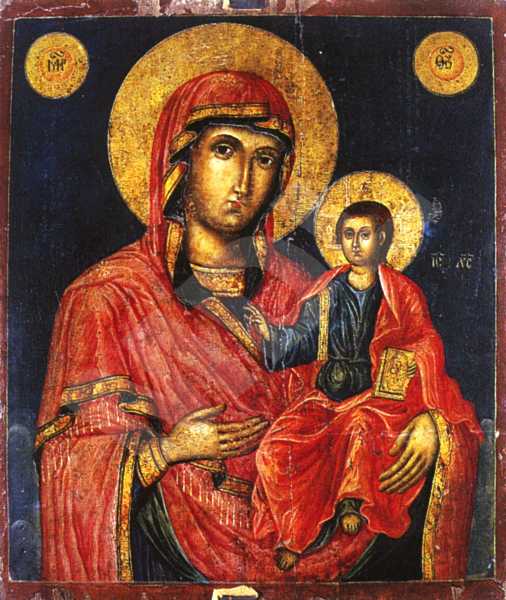The Virgin with the Infant
Type:
Icon
Period:
The first half of the
19 century
Dimiter T. Molerov, born in 1780 in Bansko, son of Toma Vishanov the Moler. One of the best-known painters, a representative of the Bansko school of art, a disciple of his father, influenced by the art of Athos. Author of the murals of the naos in the St Archangels' paraclete in the Rila monastery, the murals in the Church of the Assumption of the Virgin in the Pchelino dependance. In 1840 and 1841 together with his son Simeon Molerov he paints the murals and the sponsors' portraits in St. Nicholas' and St. John of Rila's paracletes in the principal church in the Rila monastery. Among D. Molerov's major achievements in iconography are the following icons: St. Nicholas (1816) from St. Archangel Michael's church in the village of Leshko, Christ All-triumphant with Angels and Cherubim (1833), The Nativity and a Crucifixion from St Elijah the Prophet's church in the village of Usenovo. He has also worked in Belgrade on an invitation by Prince Milosh Obrenovich of Serbia. He died in 1870 in Bansko.
Dimmensions (cm):
59
/ 51
/ 3
Location
Country: Bulgaria
Province: Montana
Town: Berkovitsa
Gallery: Art Gallery
Source
Country: Bulgaria
Other source: Others
Description
A traditional iconographic composition on the theme. The Holy Mother of God is portrayed seated, with her left arm holding the Infant and with her right hand pointing at him. Christ is holding in his left hand a closed book, and with his right one he is blessing. The figures are painted against a dark blue background.
Iconographical technique: Combined
With velaturas and "probaster" on the garments. The "wet into wet" method has also been made use of in the carnations. The varnish cover is applied thinly and unevenly. The gilding on the aureoles, on the medallions and on the decorative edgings of the headcloth is with gold-leaf.
Base material: Wood
The base is made of two softwood panels, joined by means of two inserted beams. The ground coat is of plaster, laid in a thin layer.
State, restoration traces and comments
There are many destructions on the icon. The painting layer is damaged on the face of the Holy Mother of God. There are also mechanical damages on the garments of the figures and along the enclosing brown frame. There are traces of rubbed-off and removed varnish, as also vertical crackings on the wooden base. An overpainting has been done on the blue background with a dark ultramarine paint.


